Abstract
Rhizobacteria were isolated from seedlings of seven economically important weeds and characterized for potential phytopathogenicity, effects on seedling growth, and antibiosis to assess the possibility of developing deleterious rhizobacteria as biological control agents. The abundance and composition of rhizobacteria varied among the different weed species. For example, fluorescent pseudomonads represented from 11 to 42% of the total rhizobacterial populations from jimsonweed and lambsquarters, respectively. Other bacteria frequently isolated were nonfluorescent pseudomonads, Erwinia herbicola, Alcaligenes spp., and Flavobacterium spp. Only 18% of all isolates were potentially phytopathogenic, based on an Escherichia coli indicator bioassay. However, the proportion of isolates that inhibited growth in seedling assays ranged from 35 to 65% depending on the weed host. Antibiosis was most prevalent among isolates of fluorescent Pseudomonas spp., the activity of which was due to siderophore production in over 75% of these isolates. Overall, rhizobacterial isolates exhibited a complex array of properties that were inconsistent with accepted definitions for plant growth-promoting and deleterious rhizobacteria. It is suggested that for development of effective biological control agents for weed control, deleterious rhizobacteria must be screened directly on host seedlings and must possess several properties including high colonizing ability, specific phytotoxin production, and resistance or tolerance to antibiotics produced by other rhizosphere microorganisms, and they must either synthesize or utilize other bacterial siderophores.
Full text
PDF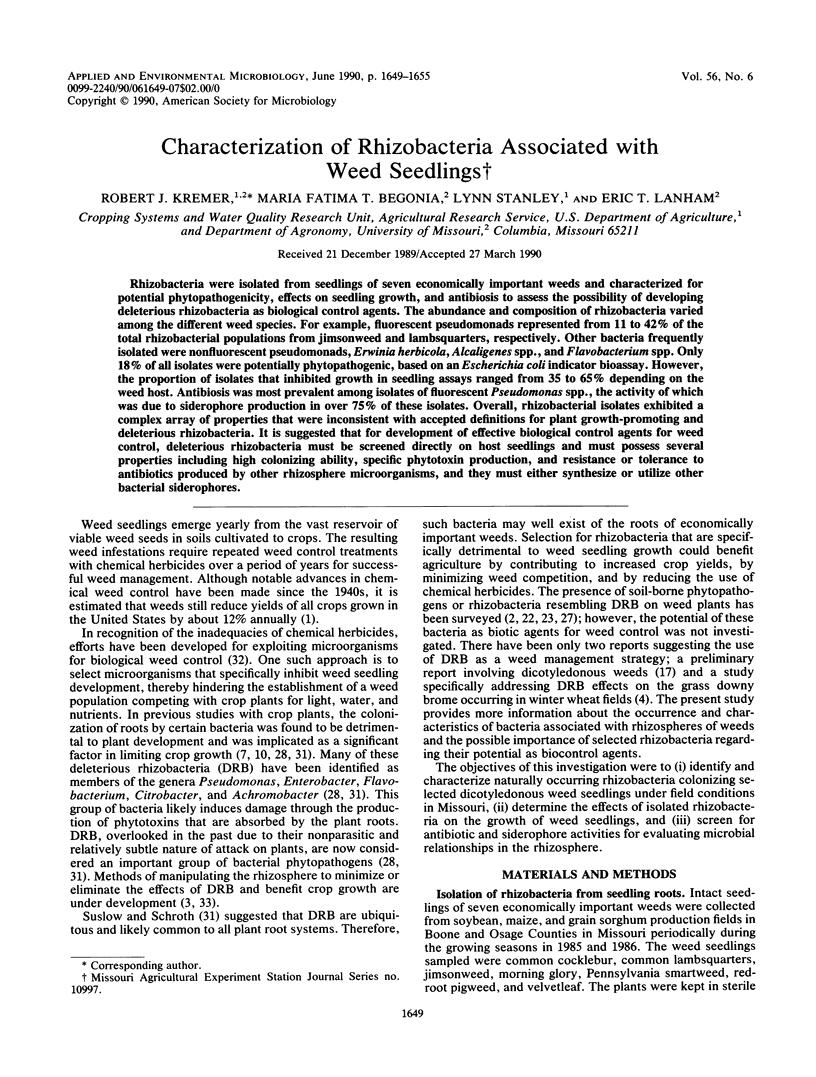
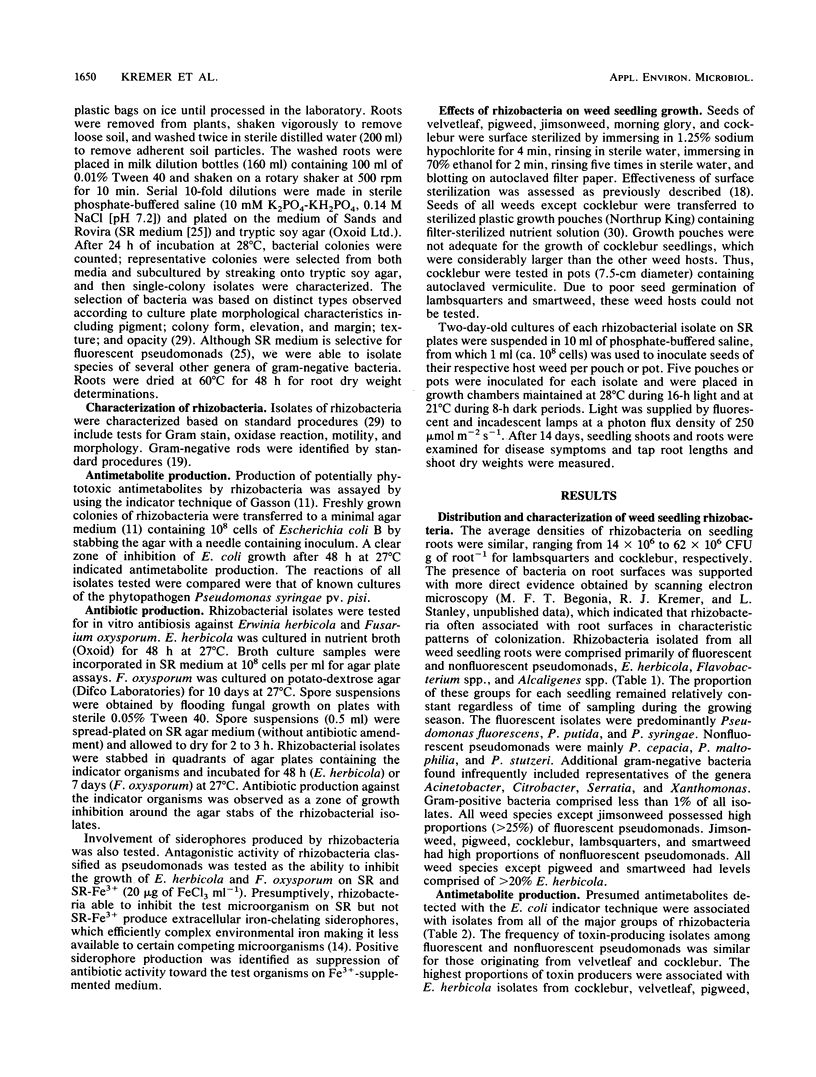

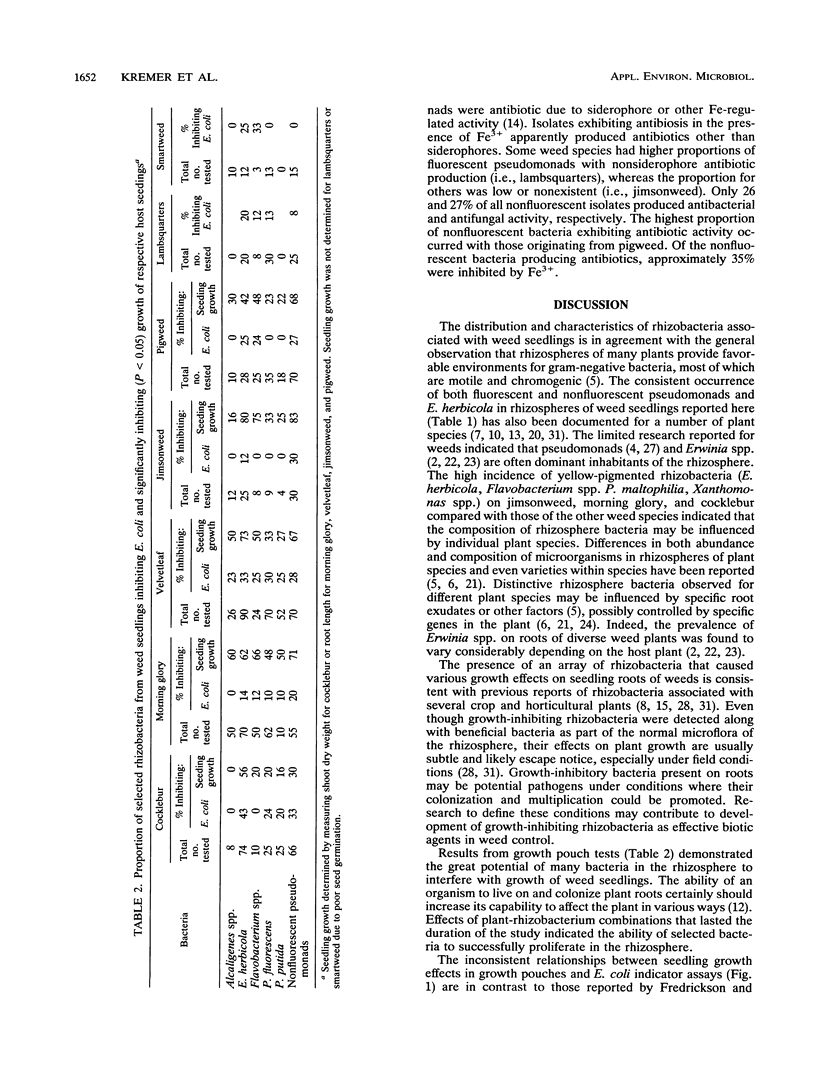
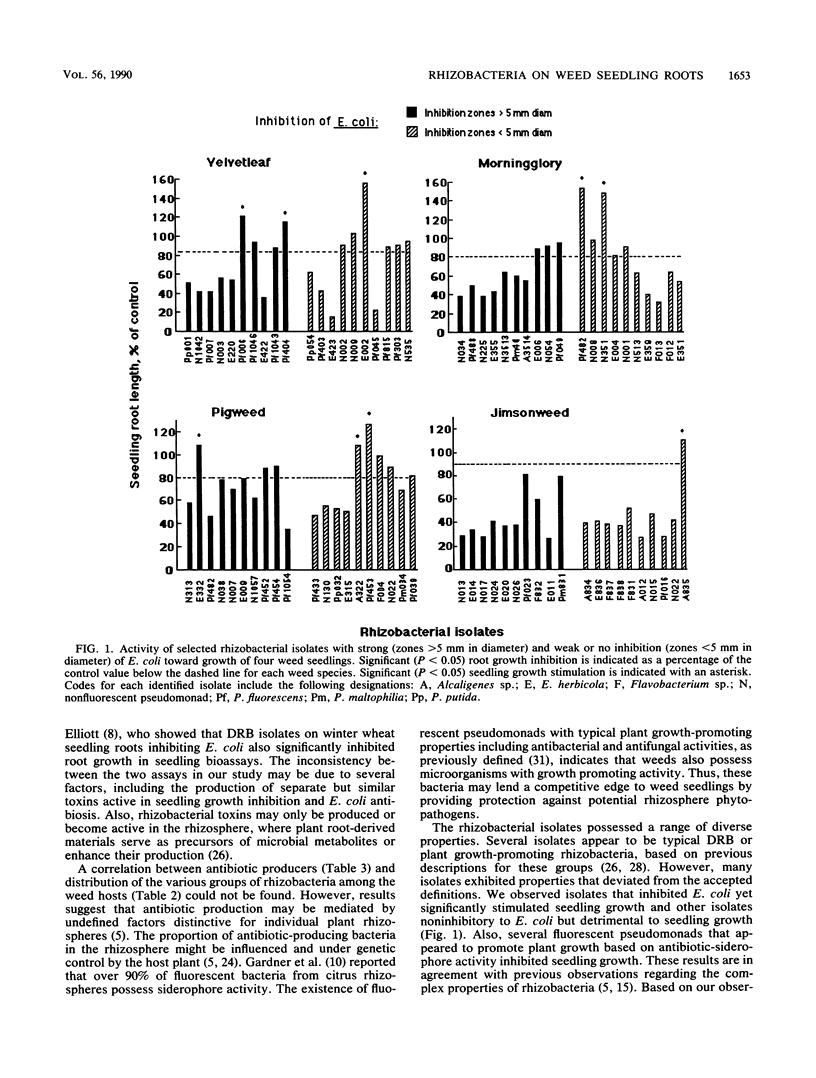
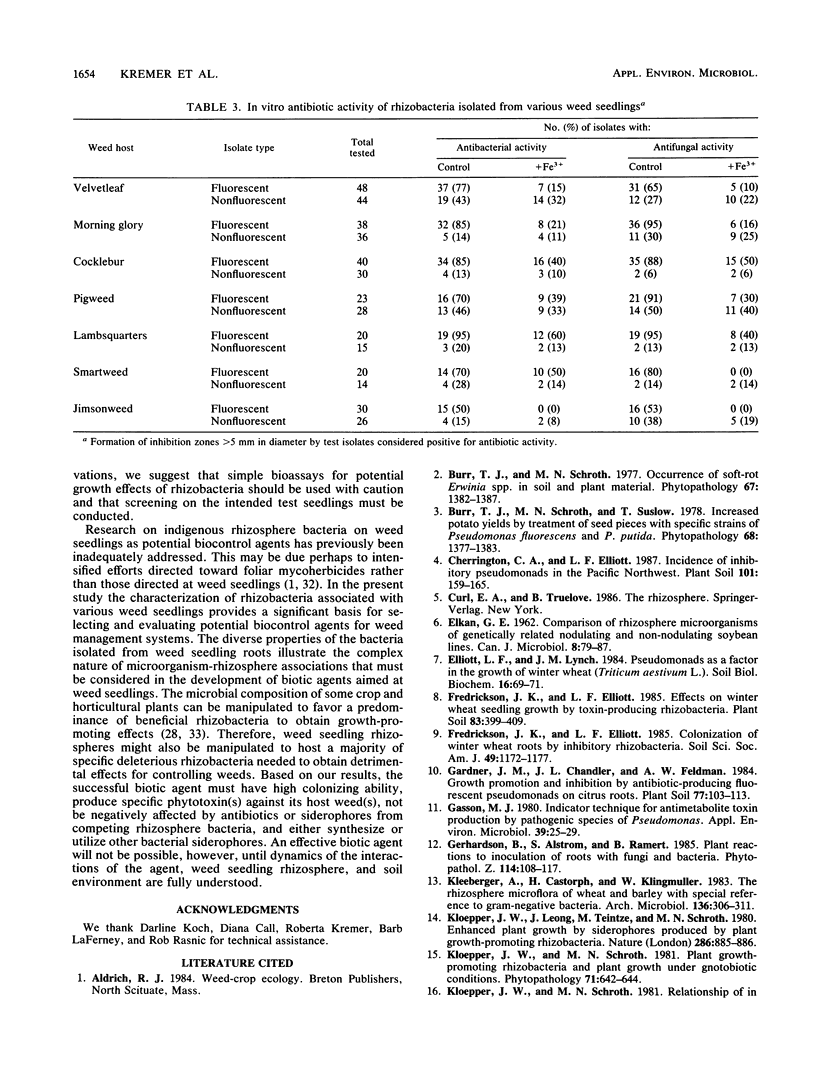
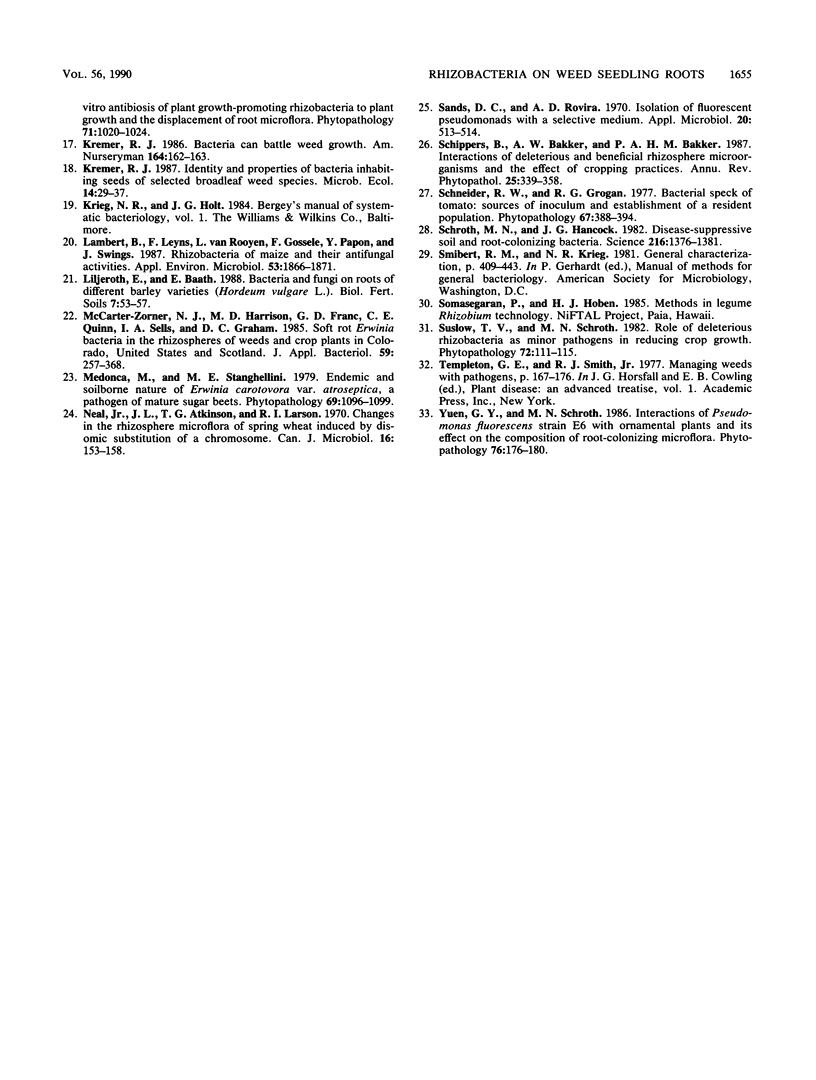
Selected References
These references are in PubMed. This may not be the complete list of references from this article.
- Adegoke G. O. Characteristics of some unclassifiable strains of staphylococci isolated from goats and sheep. J Appl Bacteriol. 1985 Sep;59(3):257–262. doi: 10.1111/j.1365-2672.1985.tb01787.x. [DOI] [PubMed] [Google Scholar]
- ELKAN G. H. Comparison of rhizosphere microorganisms of genetically related nodulating and non-nodulating soybean lines. Can J Microbiol. 1962 Feb;8:79–87. doi: 10.1139/m62-011. [DOI] [PubMed] [Google Scholar]
- Gasson M. J. Indicator technique for antimetabolic toxin production by phytopathogenic species of pseudomonas. Appl Environ Microbiol. 1980 Jan;39(1):25–29. doi: 10.1128/aem.39.1.25-29.1980. [DOI] [PMC free article] [PubMed] [Google Scholar]
- Lambert B., Leyns F., Van Rooyen L., Gosselé F., Papon Y., Swings J. Rhizobacteria of maize and their antifungal activities. Appl Environ Microbiol. 1987 Aug;53(8):1866–1871. doi: 10.1128/aem.53.8.1866-1871.1987. [DOI] [PMC free article] [PubMed] [Google Scholar]
- Neal J. L., Jr, Atkinson T. G., Larson R. I. Changes in the rhizosphere microflora of spring wheat induced by disomic substitution of a chromosome. Can J Microbiol. 1970 Mar;16(3):153–158. doi: 10.1139/m70-027. [DOI] [PubMed] [Google Scholar]
- Sands D. C., Rovira A. D. Isolation of fluorescent pseudomonads with a selective medium. Appl Microbiol. 1970 Sep;20(3):513–514. doi: 10.1128/am.20.3.513-514.1970. [DOI] [PMC free article] [PubMed] [Google Scholar]
- Schroth M. N., Hancock J. G. Disease-suppressive soil and root-colonizing bacteria. Science. 1982 Jun 25;216(4553):1376–1381. doi: 10.1126/science.216.4553.1376. [DOI] [PubMed] [Google Scholar]


